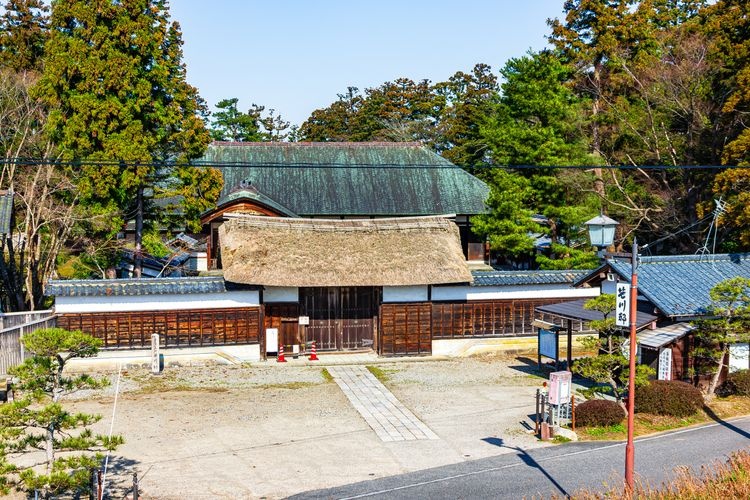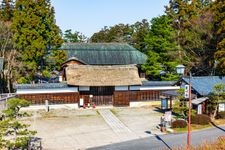Former Sasagawa Residence
menuMenu
A historical building designated as an Important Cultural Property of Japan, showcasing the life of wealthy farmers during the Edo period.






Highlights
- Experience the life of a wealthy farmer during the Edo period
- Explore a vast 14,000 square meter property
- Eleven buildings, including the main house, storehouses, and gates, are designated as Important Cultural Properties of Japan
- The main house features separate sections for official business and family life
- Discover a serene Japanese garden and a haiku monument by Kyoshi Takahama
Basic Information
- Address
- 216 Mikata, Minami-ku, Niigata City, Niigata Prefecture Search for tourist attractions in Niigata
- Access
- A 3-minute walk east from the Sasagawa-tei Iriguchi bus stop on the Niigata Kotsu W8 Mikata Line. Both the W80 (Aoyama - Mikata ・ Tsukigata) and W81 (Aoyama - Kiba ・ Mikata ・ Kito Eigyosho) routes are available. Since these are Aoyama-bound routes, transfers from the BRT Bandai Bridge Line are necessary if coming from Niigata Station. About a 20-minute drive from the Maki-Kitohigashi IC on the Hokuriku Expressway. A 5-minute drive from the Shirane Yotsukono intersection on National Route 8. Show route
- Op.Hours
- 9:00 AM to 4:00 PM
- Cld.Days
- Mondays
- Fee
- General: ¥500 Elementary & Junior High School Students: ¥300 Groups of 20 or more: ¥400 (General) Groups of 20 or more: ¥200 (Elementary & Junior High School Students)
- INFO
- This facility is jointly operated with the nearby Niigata City Soga-Hirakawa Memorial Museum. The admission fee is the same for both facilities, meaning that payment at one allows access to both on the same day.
Overview
Recommended nearby attractions
The Kitamae-sen Era Museum (Former Ozawa Residence)

A precious historical site where the mansion of a wealthy merchant from the late Edo period remains intact.
Ashigaru Nagaya (Foot Soldier's Long House)

A precious historical site offering a glimpse into the lives of *ashigaru* samurai during the Edo period. This thatched-roof *nagaya* (long and narrow house) is a valuable cultural property that preserves the lifestyle of that era.
Ichishima Residence

Experience the former residence of the Ichishima family, wealthy farmers of the Edo period. Admire the quintessential Meiji-era architecture and stroll through the beautiful, landscape-style garden.
Former Saito Family Villa

Explore the opulent former residence of a wealthy Niigata merchant and its stunning Japanese garden.
Niigata City History Museum Minato Pia

A museum situated along the Shinano River, offering a hands-on experience of Niigata's history and culture.
Former Saito Family Villa

A beautiful place showcasing the harmonious blend of a national Place of Scenic Beauty garden and a modern Japanese-style building, once the villa of a wealthy Niigata merchant.
Hokuhou Bunka Museum

A museum preserving the former residence of the Ito family, wealthy landowners of the Edo period. Explore vast gardens and view precious art, craftworks, and archaeological materials.
Niigata Prefectural Government Memorial Hall

A historic building from the Meiji era, offering a glimpse into Niigata's past.
Ryokan Memorial Museum

A must-see spot for Ryokan fans, showcasing precious materials such as Ryokan's letters and calligraphic works.
Bandaibashi Bridge

Bandaibashi Bridge, a symbol of Niigata, spans the Shinano River. This historic bridge, designated as an Important Cultural Property of Japan, boasts a charming blend of modern design and structure.
Nearby Hotels
Restay Niigata (Adult Only)

Echigono Oyado Wakatake

Hotel Oyanagi

Hotel Route Inn Niigata Nishi Inter

